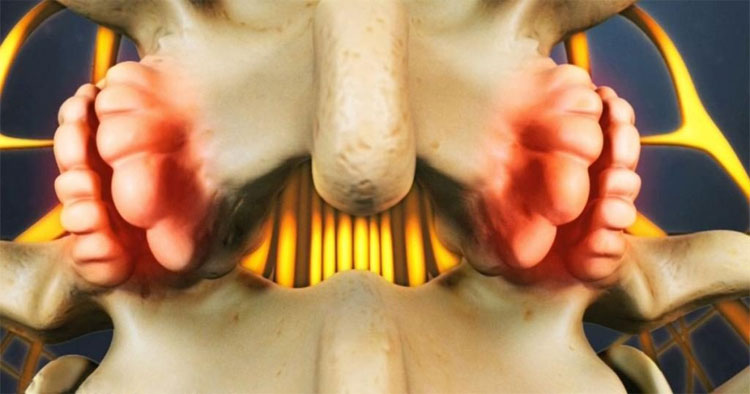Initially, spinal spurs are asymptomatic, making them difficult to detect. Over time, they grow larger and can compress nerves and the spinal cord…
Dr. Randell DuPraw, a chiropractic specialist at Maple Healthcare, explains that spinal spurs are excess bone growths that develop along the edges of the vertebrae.
Spurs are an inevitable part of the natural aging process, also known as degenerative spinal changes in older adults. As people age, the intervertebral discs lose water and moisture, leading to wear and gradual flattening. The ligaments that stabilize the spine also become loose. This condition causes adjacent vertebrae to rub against each other continuously, eventually leading to the formation of spinal spurs.

Illustration of spinal spurs. (Image: Maple Healthcare).
When they first appear, spinal spurs seem harmless, not affecting health or causing any pain symptoms. Therefore, at this stage, patients are unaware of the presence of spinal spurs. Over time, the spurs grow larger and compress nerves and even the spinal cord, resulting in pain and various complications.
Depending on the location of the spurs on the spine, patients may experience different symptoms. For instance, if the condition occurs in the cervical spine, you may feel pain and numbness radiating from the neck down to both arms and fingers. If the spurs are in the lumbar region, you may experience pain and numbness down both legs, with increased pain during walking or heavy lifting.
Pain is not the only concerning symptom when dealing with spinal spurs. In the human body, the nervous system plays a crucial role as it transmits information from the brain to all other organs. Spinal spurs that damage nerves can disrupt this information transmission and limit the function of the internal organs that those nerves control. For example, the L4 nerve in the lumbar region directly influences the prostate gland, lumbar muscles, and sciatic nerve. If compressed, patients may face a series of issues such as sciatica and urinary disorders.
There are three main methods for treating spinal spurs:
- First, medication can be used to alleviate immediate pain.
- Second, chiropractic treatment and physical therapy can help reduce pain while promoting natural recovery of the intervertebral discs.
- Surgery is a solution that may be considered for cases where the spurs are excessively large, compressing the nerve roots and spinal cord significantly.
According to Dr. Randell, to effectively treat spinal spurs, it is crucial for patients to closely follow the treatment plan provided by their specialist. Additionally, it is important to change unhealthy lifestyle habits, regularly engage in suitable physical activities, and maintain a balanced diet to support the rapid recovery of the intervertebral discs. The earlier the condition is detected, the higher the chances of successful treatment. Therefore, the doctor recommends that individuals over 30 years old should have regular spinal check-ups to detect any issues early.


















































